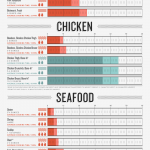You Say Paywalls Are Back? For The FT, They Never Went Away
Late last year, the Financial Times reached a pretty big milestone: It exceeded 900,000 paying subscriptions, both print and digital–up from 780,000 in 2015. That’s no small feat for a media company that, like all other media companies, is facing the constant perils and headwinds of digital advertising.
But for John Ridding, the FT‘s CEO, this announcement felt inevitable. “We’ve been using our subscription business for the better part of a decade,” he tells me. “People thought we were a little crazy.”
That’s no longer the case.
Every year publishers flock to business trends like moths to flames. Most recently, the pivot d l’année was to social video, in large part to please Facebook’s algorithm. This bet isn’t panning out as planned, as Facebook tends to change its algorithm from time to time and throw media brands’ best-laid plans off-kilter. Most recently came this week’s news that Facebook is going to de-emphasize content from brand and Pages to focus on posts from friends and family. As such trends ultimately let publishers down, some media companies are going retro and looking toward the age-old business model of subscriptions. Conde Nast recently announced its plans to offer more metered paywalls for magazines including Wired and Vanity Fair; the New York Times recently lowered the number of free reads it allows every month in an attempt to bring in even more paying customers; even digital juggernaut Business Insider has begun implementing a paywall for select stories.
For many companies, going the digital subscription route is a somewhat new plan–an attempt to reclaim old print-era strategies to drum up revenue alternatives. This comes as publishers are faced with a digital ad crisis. Media companies have historically relied on advertising as a primary means of revenue, but have seen growth sputter as Facebook and Google began sucking up the majority of the digital advertising marketshare. But online subscriptions are old hat for Ridding. He’s been building a series of business models to counteract fluctuating digital ads. “We’re on a journey to sustainable and dynamic growth,” he tells me, “and we’re having to swim against some pretty strong tides.”
These strong tides, he says, are poisoning the media industry. In his telling, quality news is on the decline and newsrooms are having to adapt fast. Not to mention, tech giants like Facebook and Google are controlling both the flow of information as well as ad dollars. Meanwhile, print advertising has plummeted. The FT, says Ridding, read the tea leaves very early on. Currently print advertising represents only 17% of the company financial publishing division’s revenue–and that division’s 2016 profit margin exceeded 45%.
“Our thinking right before this became a huge issue,” he says, is “quality journalism isn’t going to survive on advertising alone.” The FT‘s paywall, for instance, has been around since 2002. Trying to build such a business now, he claims, is “somewhere between difficult to impossible.”
“I remember when we launched our subscription model,” he says, “we got a lot of flak–people saying ‘the internet wants to be free.’” Yet, as Ridding sees it, “the primary responsibility for any publication is to its readers and not its advertisers.”

What Does The Future Hold For Digital Publishers?
If you were to aggregate all the news industry’s editorial product moves of late, you’d find publishers have thrown dozens of monetization strategies on a wall, hoping one sticks. Take Mashable: the site has seen numerous shifts over the last two years–going from hard news to video to social–which ultimately resulted in its sale for a fraction of what it was once worth. One of Mashable‘s biggest problems was that it relied predominately on digital media advertising–and its growth was slowing down at an alarming rate.
Ridding says building a captive audience is what helped differentiate the FT from other, similar publications. Over the years, the media company has amassed a trove of user data to both hone coverage and direct product strategy, thanks to the information it can collect about digital subscribers.
“For us, the whole digital strategy is rebuilding in digital what is happening in print,” he says. “We want to recreate that brand loyalty and brand habit.”
Hidden in that jargon is the goal of figuring out what makes a person either pick up a newspaper or navigate to an article–and what content makes them return. “We’ve become quite precise about this,” Ridding says. Each subscribed reader has what is called an “engagement score,” which triangulates how recently that subscriber or trial member visited the FT‘s website with how long they stayed and their frequency on the site. This data is used to understand which stories work best and why, to retain and grow subscribers. For example, a user who stays on the site for long periods of time and reads many different stories in full is more engaged than a reader who only visits the FT once in a while.
The Wall Street Journal has implemented a similarly data-driven system, one that focuses heavily on future customers. It uses identifiable data, like cookies, to rank how likely someone who navigates to an article will purchase a subscription to the site. According to Karl Wells, the Wall Street Journal‘s general manager of membership, subscription sales, and marketing, he and his team have spent the last few years building a data-driven strategy to try and wrangle in more subscriptions–“customers,” in his parlance. Metered paywalls, which give all readers a set amount of free articles per month regardless of how often they visit, he argues, are “very one dimensional.”
“What effectively we created was an intelligence layer [that] looked at all the factors that might influence someone to buy a subscription,” Wells says. In essence, every time you click on a Journal article, you are given a score based on an algorithm that ranks how likely you are purchase the subscription. Wells says there are three degrees of reader engagement–cold, warm, or hot. A cold reader doesn’t visit the site very often. A hot reader probably visits more frequently. “If you’re cold, my greatest asset is to get you to subscribe to our content,” Wells explains, so he gives that reader a guest pass to the site. If you’re a frequent visitor and therefore hot, you’re very likely to subscribe if you’re forced to–so why give away the content for free?
It should be said that both these examples have been in the making for years. Now more media companies are changing their models, finally perhaps recognizing the writing on the wall about digital advertising. Both the FT and Journal strategies, however, require a longsighted eye for the future–and a certain finesse. Audience building and quality journalism, says Ridding, “requires years of experience.” Ridding’s words suggest that if your media company doesn’t yet have a long game, it’s may be too late in the digital era to build one.
Fighting The Headwinds
The biggest issue facing digital newsrooms these days is the ever-growing Google/Facebook duopoly. Current estimates place the two companies as controlling around 73% of the United States’ digital advertising marketshare. This has made for a news market that prioritizes frequent churn and sensational headlines in order to satisfy these platforms’ algorithms and newsfeeds, which favor content that is more likely to be popular (as opposed to high quality).
The way these platforms operate, believes Ridding, creates “a flood of low-quality information [that make it] very hard to get traction.” There’s a deluge of news–fake news, poorly reported news, sensationalist news–that has been, sometimes quite successfully, competing against the voices of legacy players. This problem exists because of the digital advertising landscape. When Facebook hints to publishers that a certain type of content (like video) is preferred, many companies have no choice but to conform. We need only look at examples like Upworthy, which saw huge success with its clickbait-y, Facebook-friendly headlines–and then faltered once Facebook tweaked its algorithm.
Things may be changing a bit. Facebook has been working on its own subscription platform for articles, which might help organizations like the Journal and FT remain viable on the platform. Similarly, Google has begun listening to publishers’ needs, says Ridding, pointing out that the tech behemoth no longer requires media companies to make content free when a user accesses it from Google search results.
“This is very welcome,” says Ridding. “I would regard it as necessary but not sufficient.” He points to the fact that Facebook isn’t giving enough preliminary reader data to the publishers. “We have to understand the readers, we have to have the data on the readers,” he says, arguing that the digital media landscape today is “not a publisher system, it’s a Facebook-friendly system.” More importantly, Ridding believes, Facebook’s algorithm needs to stop de-ranking paywalled content like the FT‘s.
“There are things the tech and social media platforms can do to help the quality of the news industry as a whole,” Ridding says. For one, he thinks these platforms need to be more open with user data–tell publishers who their readers are and how engaged they are on these outside platforms, or what kinds of content they like looking at. Two, the companies should create easier ways for media companies to implement subscription models on outside platforms–something Facebook has begun testing. Lastly, tech companies should allow publishers more flexibility around how readers can access their content through those platforms, rather than make their work conform to systems like Google’s AMP or Instant Articles. In action, this simply means: don’t hurt publishers’ rankings because they don’t use your proprietary tool.
But these changes are all incremental and still require a reliance on the platforms for distribution and revenue. If there’s anything to learn from the last few years, it may be that publishers shouldn’t tailor their programs toward the technology platforms’ whims, but instead begin weaning themselves from the duopoly. Both Upworthy and Mashable are helpful bellwethers–and maybe even BuzzFeed, which has been considered a digital and social media success story for years but missed many key revenue goals in 2017, resulting in a round of layoffs. Ridding doesn’t mince words: “anyone who thinks advertising alone is going to get them through should be disabusing themselves of that notion.”
“It shouldn’t be that hard to make meaningful improvements to the ecosystem which shift the needle toward sustainable quality journalism,” Ridding believes.
Now, with Facebook’s most recent changes to its News Feed, Ridding’s stance is even more firm. In a follow-up statement sent to Fast Company in response to this news, Ridding said, “a sustainable solution to the challenges of the new information ecosystem requires further measures–in particular, a viable subscription model on platforms that enable publishers to build a direct relationship with readers and to manage the terms of access to their content.” He went on, “Without that–as the large majority of all new online advertising spend continues to go to the search and social media platforms–quality content will no longer be a choice or an option. And that would be the worst outcome for all.”
For Wells, he see an opportunity in changing consumption patterns. “There’s huge huge growth in 18 to 34-year-olds who are willing to pay for journalism,” he says. Wells describes this as a “macro trend that’s helping publishers.”
Silver lining or not, change is on the horizon, and 2018 will be the year when media can no longer rely on short-term changes to stay afloat. With that, warns Ridding, “there will be consolidation, there will be casualties.”
Fast Company , Read Full Story
(21)














